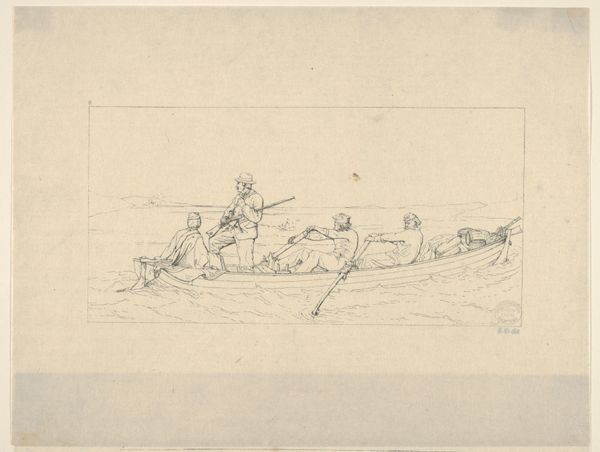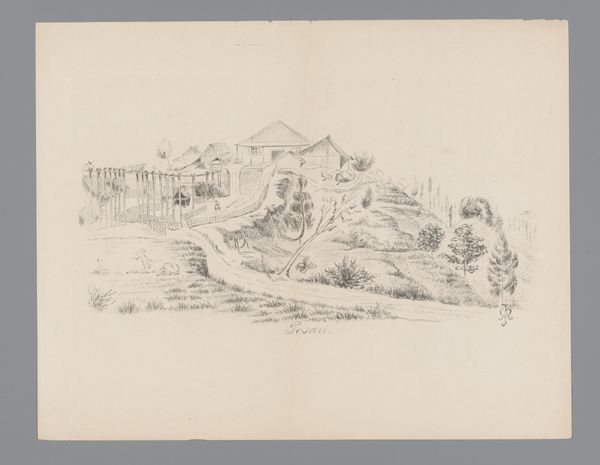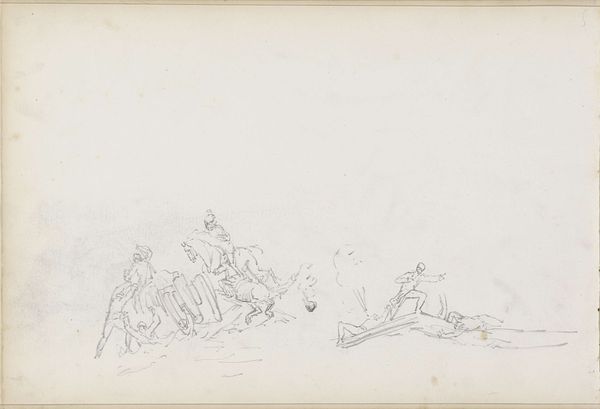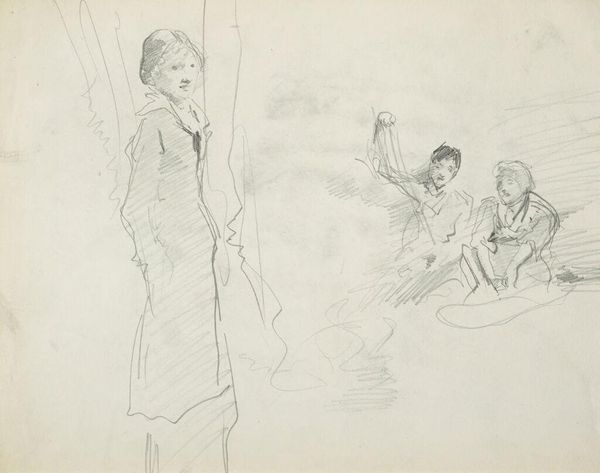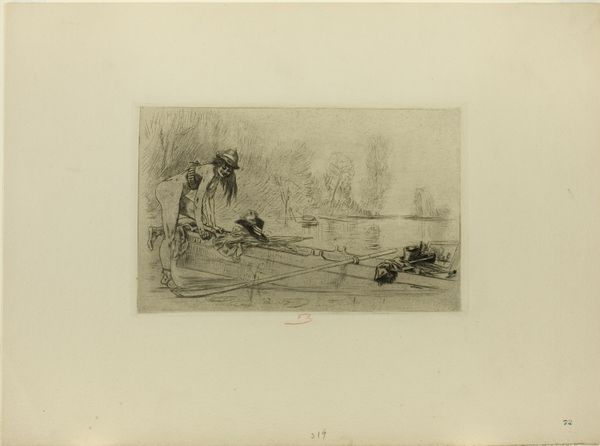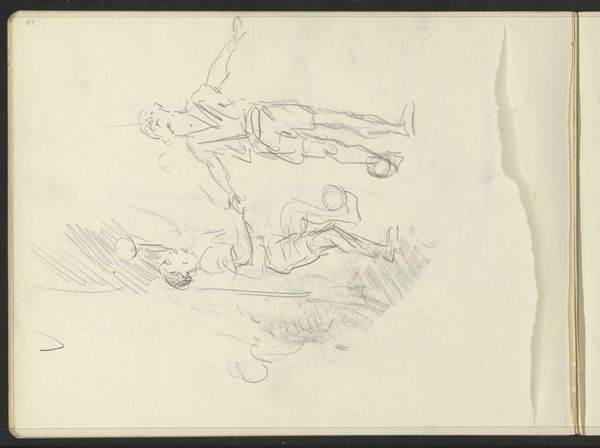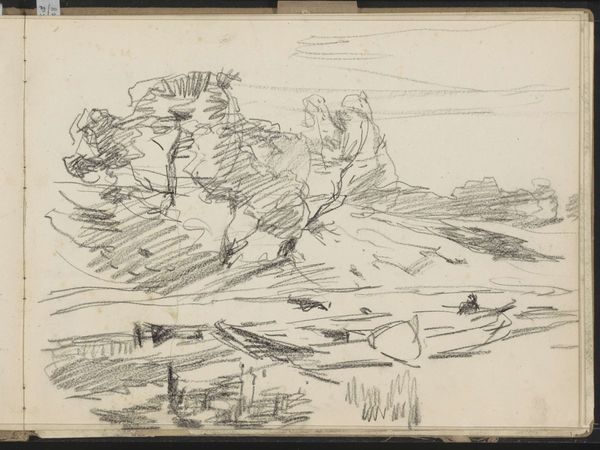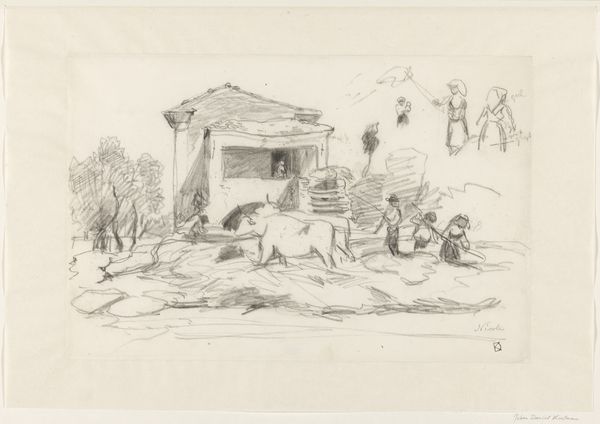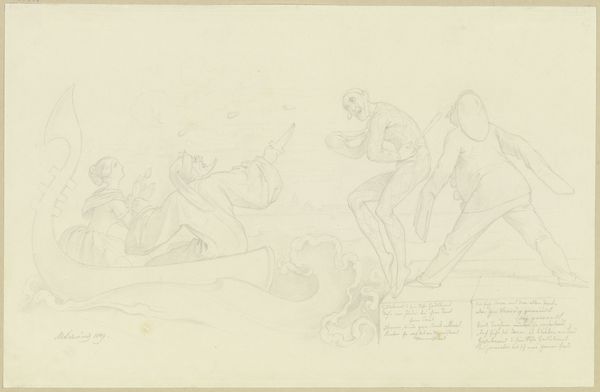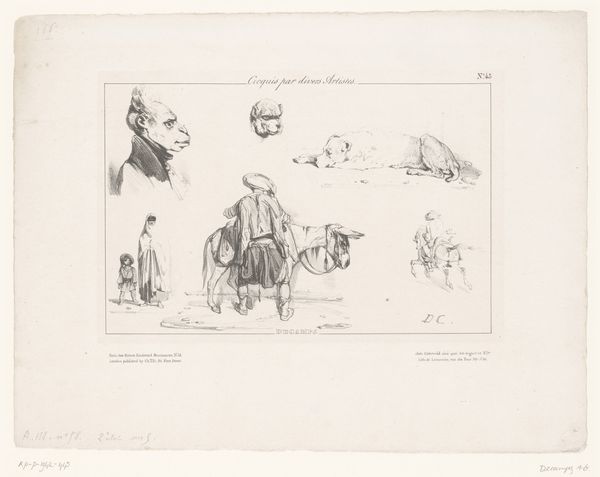
Xe Nederlandsch Taal en Letterkundig Congres / Maaltijd van Dinsdag 1n. Sept. 1868. Opgaaf der Gerechten 1868
0:00
0:00
drawing, print, paper, ink
#
drawing
#
allegory
# print
#
landscape
#
paper
#
ink
Dimensions: height 368 mm, width 450 mm
Copyright: Rijks Museum: Open Domain
Editor: This is “Xe Nederlandsch Taal en Letterkundig Congres / Maaltijd van Dinsdag 1n. Sept. 1868. Opgaaf der Gerechten,” created in 1868 by Johan Philip Koelman, a drawing in ink on paper. The scene has allegorical figures in a chariot pulled by sea horses and feels like a dreamlike, symbolic representation of something. How do you interpret this work in its historical context? Curator: What immediately strikes me is the overt allegorical representation, drawing heavily on classical imagery. We see a goddess-like figure steering a vessel emerging from the sea towards a rising sun. Note the detail – or lack thereof – of the receding shoreline and then look back at that bold central figure. What might this contrast tell us about its contemporary socio-political aspirations? Editor: So, you mean how the artist chose to portray Holland in 1868? Is it some sort of grand, optimistic vision for Dutch language and literature with classical references meant to legitimize it? Curator: Precisely. The congress celebrated here sought to standardize and promote the Dutch language and culture. By invoking classical imagery, it elevates this cultural project to a level of timeless importance. But, importantly, we must also remember it was deployed at a very specific time with clear cultural work to do. Notice that almost imposing figure dominating everything on the right! I see someone pushing the Dutch cultural presence forward in the 19th Century. Editor: That’s a fascinating point. I was focused on the imagery itself, but framing it within the cultural politics of the time makes it so much clearer. I appreciate the fresh perspectives! Curator: It’s also about how we, as viewers, continue to shape its meaning through our interpretation. Each look into the past informs the present.
Comments
No comments
Be the first to comment and join the conversation on the ultimate creative platform.


